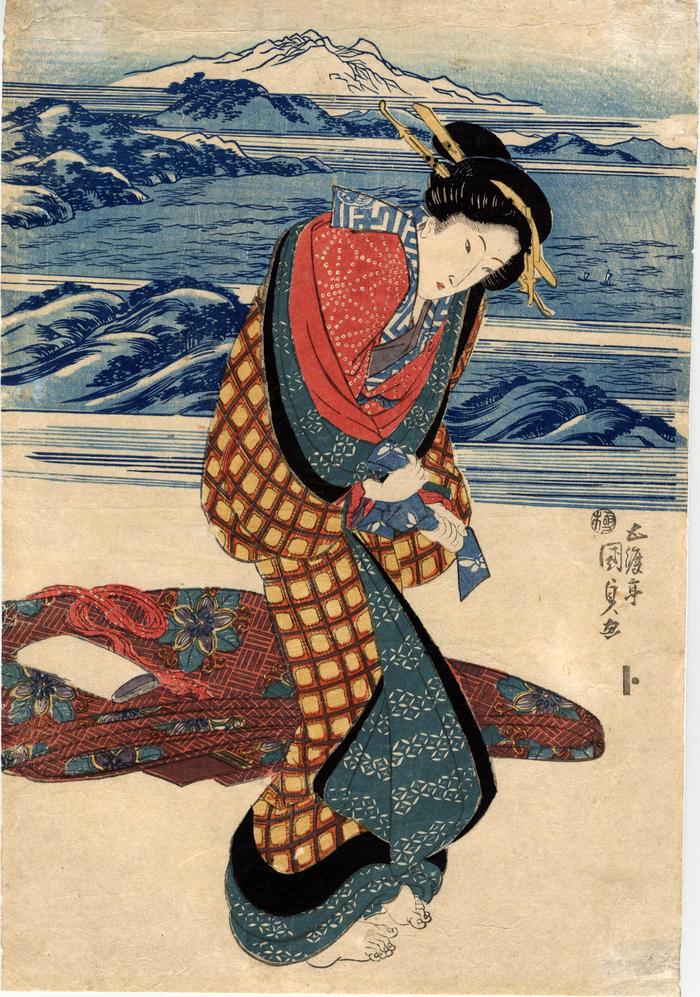Utagawa Kunisada (歌川国貞) / Toyokuni III (三代豊国) (artist 1786 – 01/12/1865)
Standing bijin tying her koshihimo (腰紐) - with an aizuri-e background
1830s
9.75 in x 14.25 in (Overall dimensions) Signed: Gototei Kunisada ga
五渡亭国貞画
Publisher: Yamaguchiya Tōbei (Marks 591 seal 15-005)
Publisher seal: Tō
Censor seal: kiwame
Lyon Collection - Bandō Mitsugorō IV against a blue background
Lyon Collection - Yamatoya Baiga against a blue background
Lyon Collection - Bandō Hikosaburō IV against a blue background
Lyon Collection - Nakamura Shikan II against a blue background
Ritsumeikan University - poor black and white reproduction Bijin tying her koshihimo, a sash tied around the waist of a kimono before the obi is tied. The koshihimo is decorated with a butterfly motif. Her blue and white undergarment is decorated with the manji or swastika motif as can be seen near her head. A pack of folded papers are lying on her bedding nearby. This may well indicate that she is a courtesan. The kanzashi hair pieces are made from tortoiseshell.
****
Kunisada was known to have reused certain elements incorporated into earlier prints. Sometimes he repeated them decades later. Such is the case with this figure of a woman tying her koshihimo. This same image appeared in a large series promoting famous restaurants published by this same house ten to fifteen years earlier, but without the aizuri-e background. Everything else is the same, from the woman's clothing to her bedding accessories lying on the ground behind her. (JSV)
****
There is an interesting aspect to this print which is not immediately obvious. Clearly the aizuri-e background plays a prominent role, but what strikes the most is that the publisher Yamaguchiya Tōbei and/or artist as his collaborator had a penchant for such settings.
Also in the Lyon Collection are a 4 actor prints from a larger set of 6 that all place the main figure in the foreground against an aizuri-e background. They date from ca. 1832. We have added links to those prints above. This use of a blue inks in this manner can be no coincidence. It is clearly intentional. As to whether or not this should be credited to the publisher or the artist will never be known, but that takes nothing away from the end product which is beautiful in the extreme.
beautiful women (bijin-ga - 美人画) (genre)
Yamaguchiya Tōbei (山口屋藤兵衛) (publisher)
blue prints (aizuri-e - 藍摺絵) (genre)
